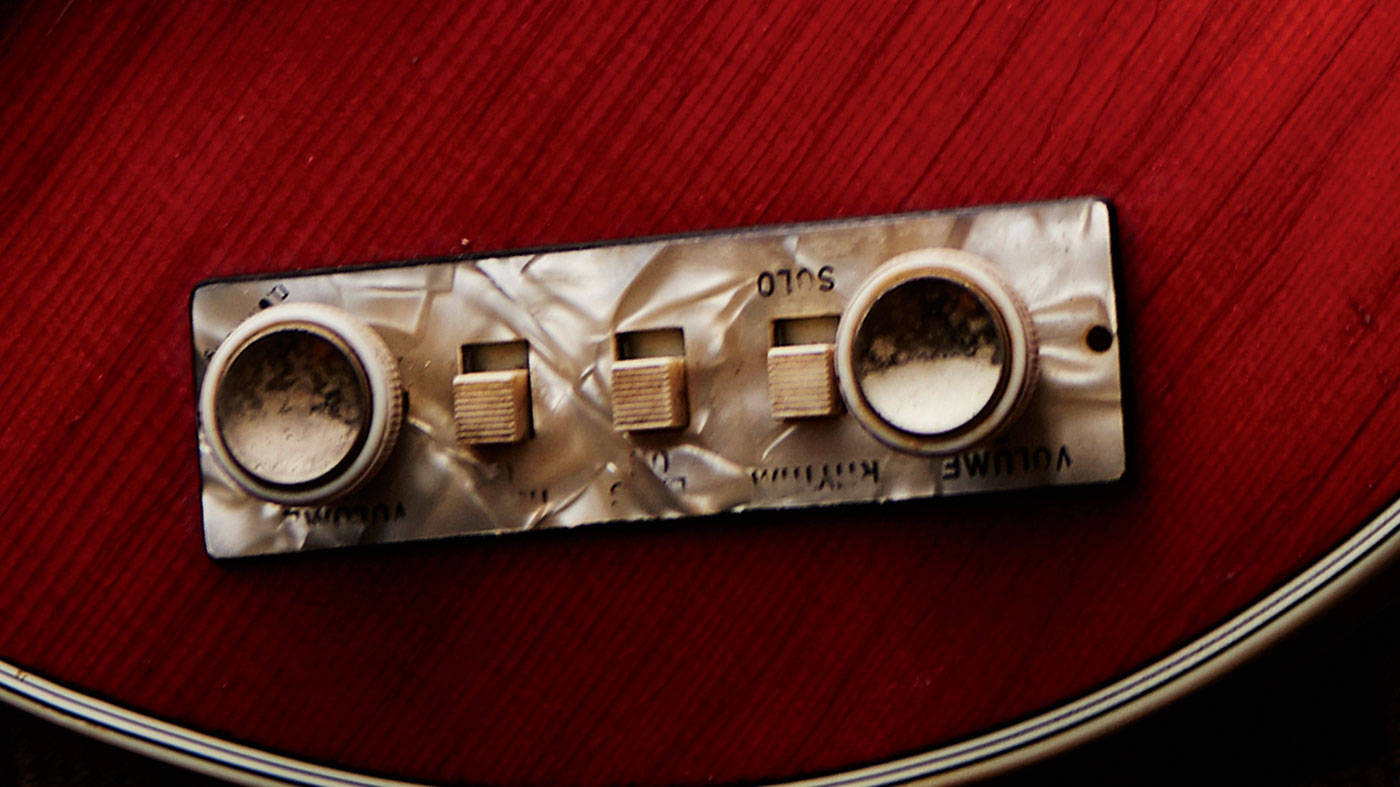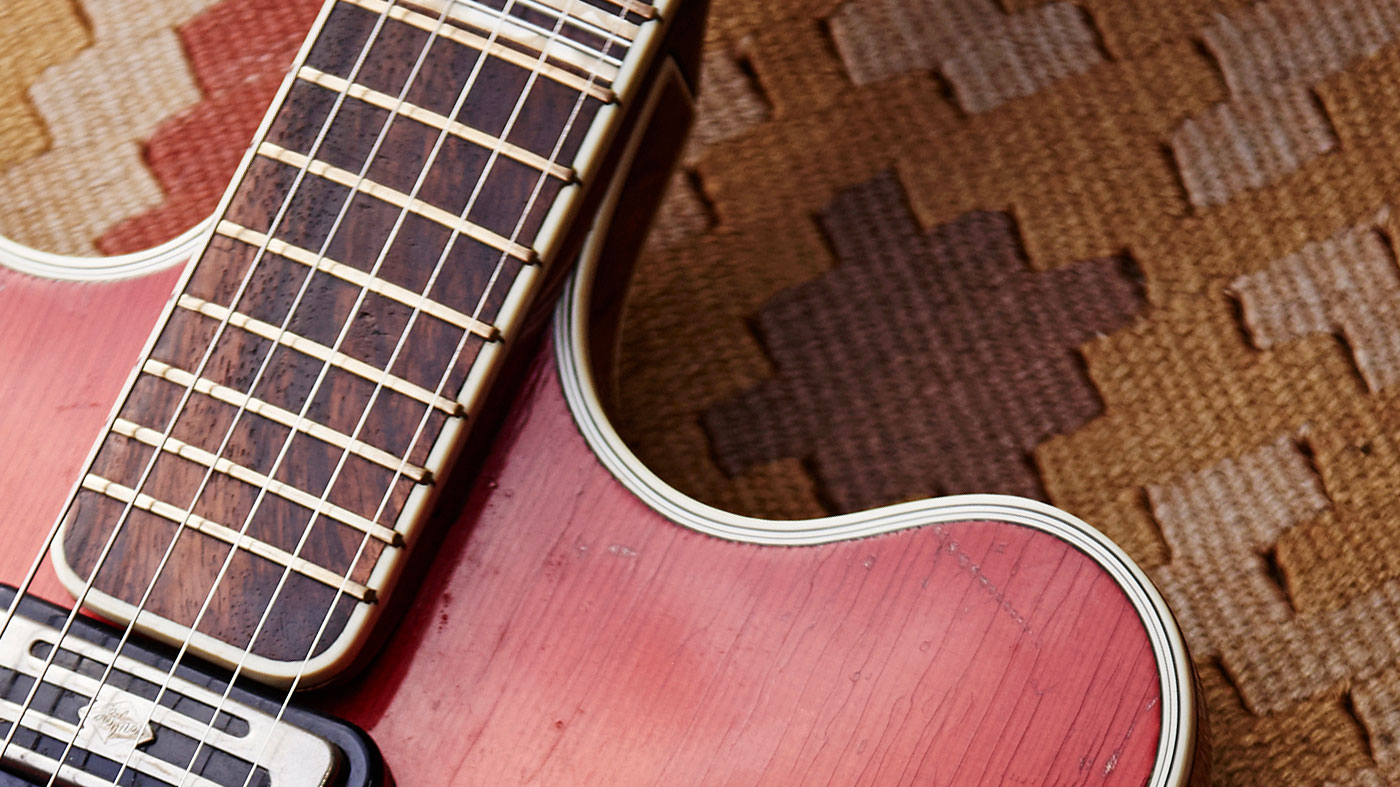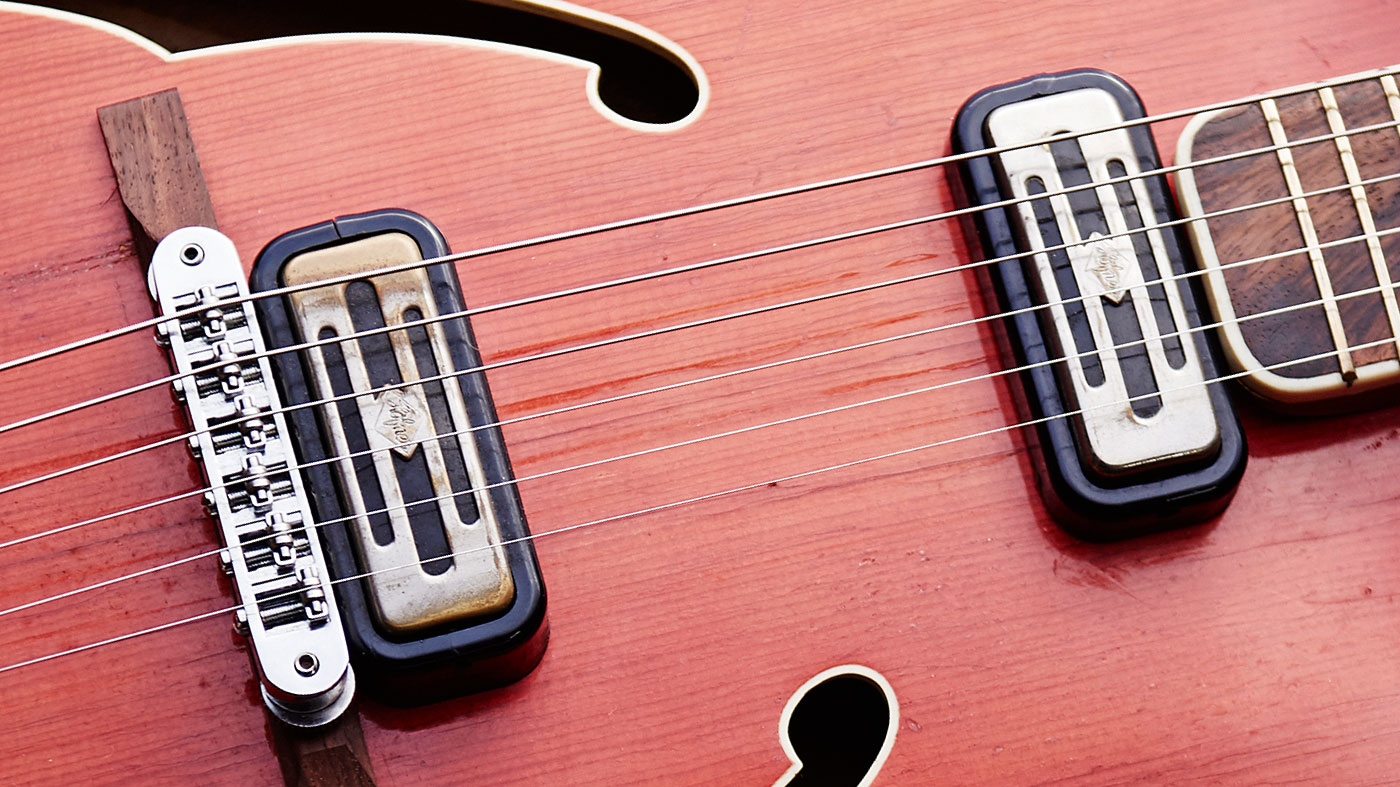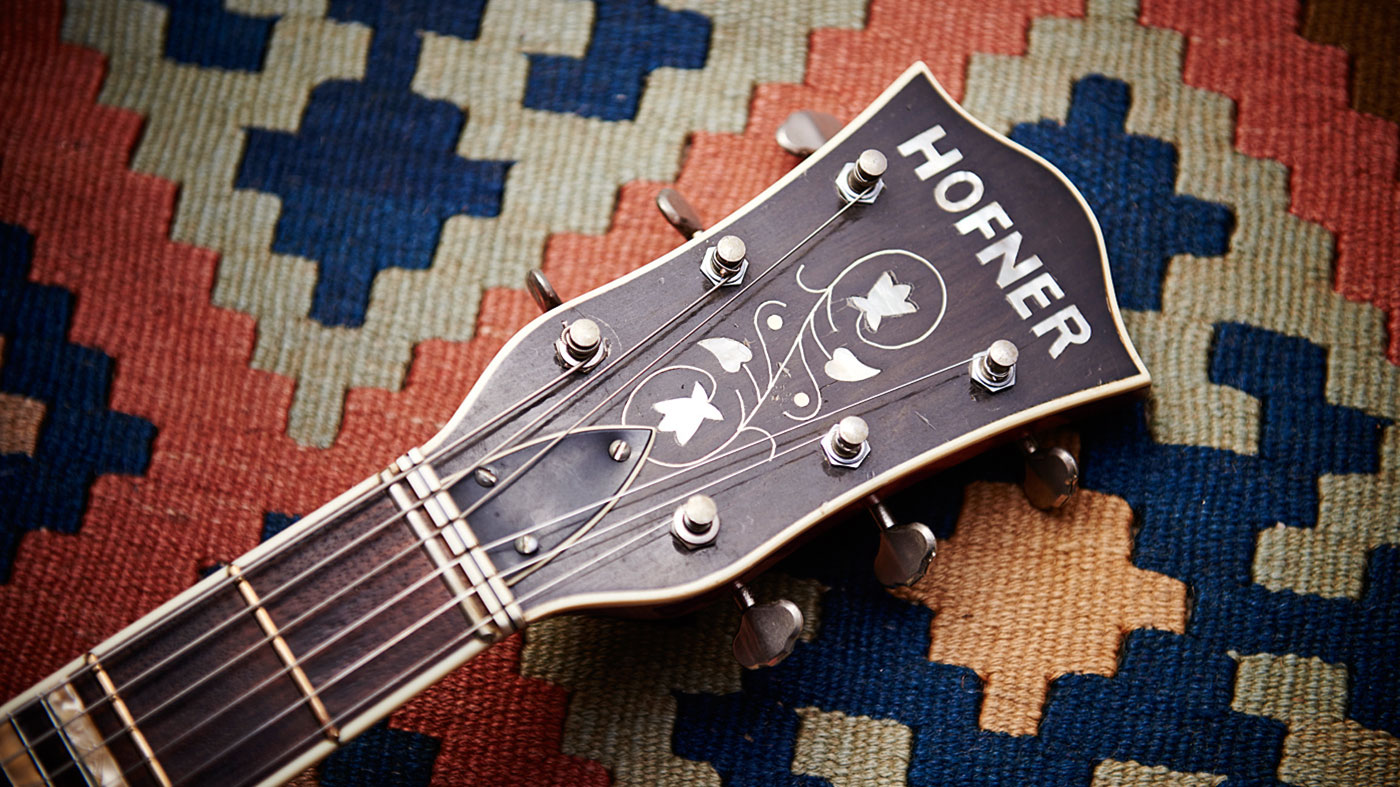
Höfner has been producing musical instruments since it was founded in 1887 by Karl Höfner, making the company one of the longest established in the music manufacturing industry.
Originally focused on orchestral instruments, primarily violins, violas and cellos, the rise of rock ‘n’ roll and skiffle during the 1950s made it the go to brand for many burgeoning guitar talents, particularly in the UK where the ban on US imports made Gibsons and Fenders a very rare sight indeed.
Debuting in the UK marketplace in 1960, the Verithin was evidently Höfner’s answer to Gibson’s 3-Series, most notably the ES-330
Located in Bubenreuth in Bavaria, Höfner found that guitars rapidly overtook everything else they produced, company records showing that they exported 250,000 guitars to the UK in 1957 alone. Despite producing a lot of full size jazz guitars - with factory fitted pickups - during the 1950s, the end of the decade saw Höfner turn its attention to double cutaway semi acoustics. Enter the Verithin!
Debuting in the UK marketplace in 1960, the Verithin was evidently Höfner’s answer to Gibson’s 3-Series, most notably the ES-330, which the American giant had released a year earlier, with the common theme being no centre block that was to be found on the ES-335 and 345 models.
The Verithin lived up to its name in that it was indeed very thin, with its body depth measuring in at only 1.25 inches (31.75mm), as opposed to Gibson’s 1.75 inches (44.45mm) on the 335.
This example is largely original but, as with many examples of its vintage, has been sympathetically modded with a roller bridge and retro-fitted Bigsby of recent manufacture. In every other sense, though, this is a prime example of a Verithin from the first year of production, 58 years young...
Top

With a spruce top and laminated maple back combined with a very Gibson-esque cherry finish and an (optional) Bigsby, it’s easy to see how the Verithin became a worthy substitute for the then unobtainable Gibson 3-Series.
Want all the hottest music and gear news, reviews, deals, features and more, direct to your inbox? Sign up here.
F-holes

Unlike its Gibson close cousin, the ES-330, the Verithin had the same white/black plastic binding around its f-holes as was to be found around the body perimeter.
Controls

Early Verithins had two volume controls - one for each pickup - and three slider switches for pickup/ solo-rhythm duties. Two years further down the line, the electrics had been revised to include a more standard array of two volume, two tone rotaries.
Cutaway

The Verithin’s cutaways began life as the rounded Venetian variety, as shown here, changing to the pointier Florentine type in 1966.
Pickups

When it was introduced, the Verithin had the ‘toaster’ single coil pickups visible here. By 1962, these had changed to what appeared to be small humbucking units (but were in fact still single coils), known as the ‘Diamond Logo’ type.
Headstock

Höfner’s mother-of-pearl fl oral design sits underneath its nononsense logo on a headstock that apes the company’s Club 60 guitar. Note the presence of a zero fret atop the Verithin’s fingerboard.
We would like to thank Vintage ‘n’ Rare Guitars, Bath for giving us access to this fascinating instrument.
Guitarist is the longest established UK guitar magazine, offering gear reviews, artist interviews, techniques lessons and loads more, in print, on tablet and on smartphones
Digital: http://bit.ly/GuitaristiOS
If you love guitars, you'll love Guitarist. Find us in print, on Newsstand for iPad, iPhone and other digital readers


